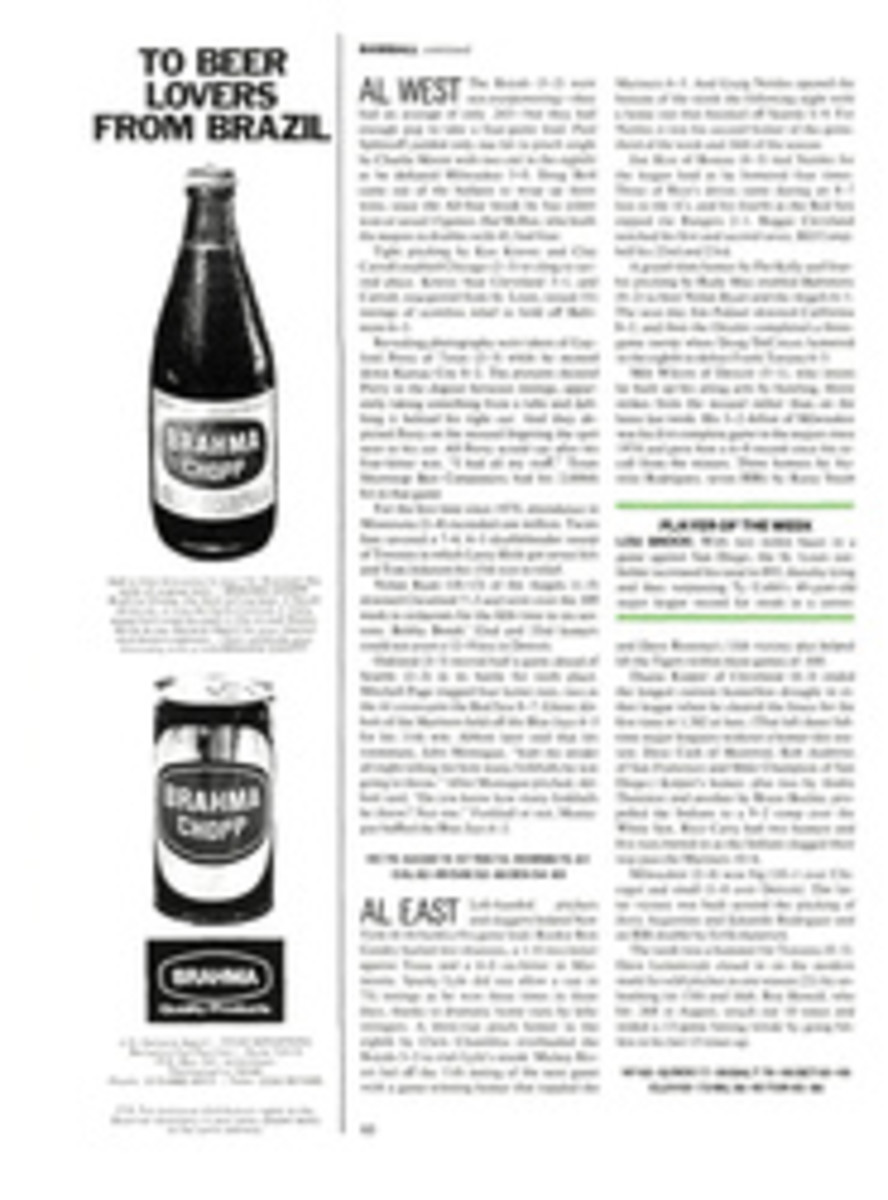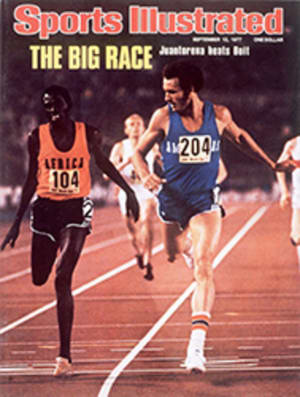
He didn't knuckle under
It's time for some revisionist thinking about the knuckleball. For too long hitters and catchers have been perceived as its innocent victims, powerless in the face of the fluttering demon. "I take three swings and sit down," Dick Allen has said. "That way I won't mess up my stroke." And broadcaster Bob Uecker was still a catcher when he first uttered what has become his favorite line: "The way to catch a knuckleball is to wait until the ball stops rolling and then pick it up."
In truth, the knuckler is an indiscriminate imp that preys not only on batters and receivers but also on the pitchers who throw it. The knuckleballer has no idea what the pitch will do. It may dart or dip or do nothing at all, in which case it sits waiting to be picked off like a fat apple on a low branch. As a result, even good knuckleballers often have trouble winning more games than they lose. "They pitch a lot of three-, four-and five-run games," says Johnny Sain, the masterful pitching coach who works these days for the Braves. "There's so much that can happen."
Rarely has anyone been as severely beset by the fickleness of the knuckleball as Atlanta's Phil Niekro has been this season. Having won 17 games for a last-place team in 1976, Niekro felt he had mastered his specialty and turned to polishing other pitches in spring training. He quickly learned that the knuckleball is crudest to those who forsake it. When he reached for it in April, it was not there. Pushing pitches with an awkward overhand motion, Niekro lost his first seven decisions. "It was the first time in years I found myself worrying," he says. "The margin of error is so slight that you don't always know when you're slipping."
In May, Atlanta Manager Dave Bristol told Niekro to discard his other pitches and go back to his winning knuckleball, which he throws with a delivery that is "a hair under three-quarters." Soon Niekro was back on form—the sharp-nailed index and middle fingers of his right hand digging into the seams and "killing" the spin, the back of his palm thrusting pitches like a basketball chest pass, the ball flicking in and out of the strike zone, the batters fishing hopelessly. "His knuckleball is dancing," moaned Tony Perez of the Expos. "I start swinging here and the ball winds up there."
More than anything, the great speed of Niekro's pitches distinguishes them from other knuckleballs. "His pitches jump quicker and more than anyone else's," says Uecker, who was one of Niekro's first major league catchers.
Since his 0-7 start, Niekro has improved his record to 14-17. The schizoid season has given him league-leading statistics in a mixed bag of categories: strikeouts (224), walks (148), starts (37), losses (17), complete games (18), hits (269), decisions (31), runs (142), innings pitched (284‚Öì) and earned runs (126).
Sometimes Niekro will give an abbreviated replay of his entire season in a single game. A few starts back, against the Expos, he was No-Hit Niekro for the first 2‚Öî innings. Then he began overhanding pitches. Two walks, a wild pitch and three doubles later, Montreal had scored a run in three straight innings. In part because he is a capable hitter—he helped himself in this game with a sacrifice, a single, a run and an RBI—Niekro stayed in. His good stuff returned, and the Braves rallied to go ahead 5-3. But in the eighth Niekro began rushing his deliveries and walked two batters. Bristol came to the mound to tell Niekro to slow down, and he finished strongly. His statistics: three runs and six hits allowed, six strikeouts, five walks, one wild pitch and the usual complete game.
Niekro is not the only knuckleballer enduring an up-and-down season. The Dodgers' Charlie Hough (5-10, 19 saves) started off as perhaps the best reliever in baseball but has cooled off. Wilbur Wood (6-7) of the White Sox is finally back in the rotation after several long stints on the injured list. And Niekro's brother Joe (11-5), who has thrown the knuckler since 1970, worked his way into the Astro rotation in July.
But none of them is likely to finish stronger than Phil Niekro. At his present pace he will win 16 games for another sorry bunch of dead-enders, and at 38 he could become the second oldest (Early Wynn was a few months older) to win a league strikeout title. Just as surely as Hoyt Wilhelm was the best reliever to throw the Iron Butterfly, Niekro has established himself as the top knuckle-balling starter. In the past 10 years he has averaged 16 wins and had only one losing season, while the Braves have finished at .500 or worse seven times. During that period only six active pitchers have won more. With 175 career victories, Niekro is within easy range of Dutch Leonard's career record for a knuckle-bailer of 191 wins. Merely middle-aged by knuckleball standards—Wilhelm retired at 48—Niekro should pass Leonard and then some. "There's nothing in the uniform player contract about maximum age," says Niekro, who has missed two starts in 10 seasons. "I don't even think about the subject."
According to popular lore, knuckle-bailers scarcely have to work at all. Supposedly they lay back, throw a pitch that comes easily to them and hope for the best. Sain feels the stereotype is inaccurate. "To throw a pitch like that you have to be a craftsman," he says. "That's why so few people have been able to learn it. And you have to have great control over yourself. Can you imagine a guy who gets all excited throwing a knuckleball?"
With his sad eyes, self-deprecating Polish jokes and legendary sleeping habits—he once snored through a brawl on a team charter—Niekro is appropriately phlegmatic. He keeps no books on hitters, cares not which park or what weather he is pitching in and never takes his losses out of the clubhouse. Niekro also forgoes all superstitions, which is no small feat for a man born with one green eye and one blue eye on April Fool's Day. "A woman who lives nearby brings over a four-leaf clover every time I pitch at home, and a man insists on having a beer at my house," he says. "It's not something I would do, but I appreciate their help."
Niekro prefers helping himself in more tangible ways—with his good hitting, bunting, fielding and pickoff moves. He is also extraordinarily helpful to others, spending countless unpaid hours at a host of charitable activities ranging from the Big Brothers to the March of Dimes. When Niekro was given a special day by Lansing, Ohio, the mining town of 950 where he and John Havlicek shared the limelight as three-sport high school heroes, he reciprocated by writing a 44-line poem of tribute that was published in a local newspaper.
It may be because Niekro is so considerate of others that he refuses to so much as smirk at hitters who swing wildly at his fierce floaters. But then again, it may be because he is no dummy. The knuckleball, as he knows too well, always has the last laugh.
PHOTO

